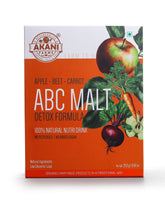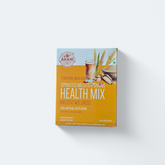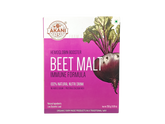The Complete Gardening Guide: From Soil to Harvest - Sustainable Growing for Every Home
Published by Akani Farms | Your trusted partner in regenerative agriculture
Growing your own food is one of the most rewarding experiences you can have. Whether you're a complete b
eginner or looking to improve your existing garden, this comprehensive guide will walk you through everything you need to know about sustainable gardening practices that work in harmony with nature.
Understanding Your Garden Foundation
Soil Health: The Heart of Your Garden
Healthy soil is the foundation of any successful garden. At Akani Farms, we believe in regenerative practices that build soil health naturally. Start by testing your soil's pH level, which should ideally be between 6.0 and 7.0 for most vegetables. You can easily test this using a simple soil pH kit available at garden centers.
Good soil should be dark, crumbly, and smell earthy. If your soil is too clay-heavy, it will retain too much water. If it's too sandy, water and nutrients will drain away too quickly. The perfect soil combines all three elements: sand for drainage, clay for nutrient retention, and silt for the ideal texture.
Creating Your Own Compost
Composting is nature's way of recycling organic matter. Start a compost pile with kitchen scraps like vegetable peels, coffee grounds, and eggshells. Add brown materials like dried leaves, straw, or shredded paper. Turn your compost every few weeks and keep it moist but not soggy. In 3-6 months, you'll have rich, black gold for your garden.
Planning Your Garden Layout
Choosing the Right Location
Your garden needs at least 6-8 hours of direct sunlight daily. Observe your yard throughout the day to identify the sunniest spots. Consider proximity to water sources and protection from strong winds. South-facing areas typically receive the most consistent sunlight throughout the growing season.
Companion Planting for Natural Pest Control
Companion planting is an ancient practice that pairs plants together for mutual benefit. Plant basil near tomatoes to improve their flavor and repel pests. Marigolds planted throughout your garden naturally deter many harmful insects. Beans fix nitrogen in the soil, benefiting neighboring heavy-feeding plants like corn and squash.
Essential Tools for Every Gardener
Must-Have Garden Tools
Invest in quality tools that will last for years. Essential tools include a sturdy spade for digging, a garden fork for breaking up soil, pruning shears for harvesting and maintenance, a watering can or hose with adjustable nozzle, and a wheelbarrow for moving soil and compost. Hand tools like a trowel, hand weeder, and garden gloves are indispensable for detailed work.
Organic Pest Management
Prevention is always better than treatment. Encourage beneficial insects by planting flowers like sunflowers, zinnias, and cosmos. Use neem oil spray for soft-bodied insects, and introduce ladybugs and lacewings as natural predators. Row covers protect young plants from both pests and harsh weather.
Seasonal Gardening Calendar
Spring: Preparation and Planting
Spring is the time for garden preparation. Clear winter debris, add fresh compost to your beds, and start seeds indoors for warm-season crops. Direct sow cool-season vegetables like lettuce, spinach, and peas as soon as the soil can be worked. Prepare your irrigation system and check all tools for the busy season ahead.
Summer: Maintenance and Harvest
Summer requires consistent watering, usually early morning or late evening to minimize evaporation. Mulch around plants to retain moisture and suppress weeds. Harvest regularly to encourage continued production. Watch for signs of stress in plants and adjust watering accordingly.
Fall: Extended Harvest and Preparation
Fall gardening extends your growing season significantly. Plant cool-season crops for winter harvest, collect seeds from your best plants for next year, and begin preparing beds for winter with cover crops or heavy mulching. This is also the perfect time to plant garlic for next summer's harvest.
Winter: Planning and Indoor Growing
Use winter months for garden planning and seed ordering. Start an indoor herb garden on a sunny windowsill. Review what worked well this past season and what you'd like to change. Study seed catalogs and plan next year's garden layout.
Water-Wise Gardening Techniques
Efficient Irrigation Methods
Drip irrigation systems deliver water directly to plant roots, reducing waste and preventing leaf diseases. Soaker hoses work well for row crops and can be easily moved as needed. Rain barrels collect free water while reducing runoff. Mulching around plants reduces evaporation by up to 50%.
Understanding Plant Water Needs
Different plants have varying water requirements. Deep-rooted plants like tomatoes need less frequent but deeper watering. Shallow-rooted crops like lettuce need more frequent, lighter watering. Learn to read your plants - wilted leaves in the morning indicate water stress, while afternoon wilting is normal on hot days.
Growing Healthy Vegetables Organically
Starting from Seeds vs. Transplants
Starting from seeds gives you access to more varieties and is more cost-effective. However, transplants give you a head start on the growing season. Some crops like carrots and beans must be direct-seeded, while others like tomatoes and peppers benefit from being started indoors 6-8 weeks before the last frost.
Fertilizing Naturally
Organic fertilizers release nutrients slowly, feeding plants consistently throughout the growing season. Compost tea provides immediate nutrition, while fish emulsion offers quick nitrogen for leafy greens. Bone meal supplies phosphorus for root development, and kelp meal provides trace minerals often missing from garden soil.
Common Challenges and Solutions
Dealing with Garden Pests Naturally
Identify pests correctly before treating - not all insects are harmful. Encourage beneficial insects with diverse plantings. Use physical barriers like row covers for young plants. Handpicking larger pests like caterpillars and slugs is often the most effective control method.
Disease Prevention Strategies
Good air circulation prevents many fungal diseases. Water at soil level rather than overhead. Remove diseased plant material immediately and dispose of it in the trash, not the compost. Rotate crops annually to prevent soil-borne diseases from building up.
Harvesting and Preserving Your Bounty
When and How to Harvest
Harvest most vegetables when they're young and tender for the best flavor. Pick tomatoes when they're fully colored but still firm. Harvest leafy greens in the cool morning hours when they're crisp and full of moisture. Regular harvesting encourages continued production.
Simple Preservation Methods
Preserve your harvest through freezing, dehydrating, or canning. Herbs can be dried by hanging in bundles or using a dehydrator. Many vegetables freeze well after blanching. Fermentation is an ancient preservation method that also adds beneficial probiotics to your diet.
Building Soil Health for Long-Term Success
Cover Crops and Green Manures
Cover crops planted in unused garden areas prevent erosion and add organic matter when tilled in. Crimson clover fixes nitrogen while providing beautiful spring flowers. Winter rye protects soil through harsh weather and adds biomass in spring. Buckwheat grows quickly and attracts beneficial insects.
No-Till Gardening Methods
No-till methods preserve soil structure and beneficial microorganisms. Layer compost and mulch on top of soil rather than digging it in. Use a broadfork to gently loosen compacted soil without disrupting soil layers. This approach builds soil health while reducing labor.
Sustainable Gardening Practices
Water Conservation Techniques
Collect rainwater in barrels or cisterns for dry periods. Choose drought-tolerant varieties suited to your climate. Group plants with similar water needs together. Use greywater from sinks and washing machines for irrigation where permitted.
Reducing Garden Waste
Compost all organic garden waste to create valuable soil amendments. Use fallen leaves as mulch or add them to compost. Save seeds from your best plants for next year's garden. Share excess produce with neighbors or donate to local food banks.
Getting Started: Your First Garden
Planning Your First Growing Season
Start small with a 4x4 foot raised bed or a few containers. Choose easy-to-grow crops like lettuce, radishes, beans, and zucchini for early success. Focus on vegetables your family actually eats. Keep detailed records of what you plant, when you plant it, and how it performs.
Building Confidence Through Success
Success breeds more success in gardening. Start with proven varieties that grow well in your area. Join local gardening groups or online communities for support and advice. Don't be discouraged by failures - every gardener learns through trial and error.
Ready to Start Your Garden Journey?
At Akani Farms, we're passionate about helping people grow their own food using sustainable, regenerative practices. Our carefully crafted products support healthy soil and thriving gardens. Visit our collection of organic fertilizers, compost amendments, and sustainable growing supplies to give your garden the best possible start.
Whether you're planning your first garden or looking to improve your existing growing space, remember that gardening is a journey of continuous learning. Each season brings new challenges and rewards. Start where you are, use what you have, and grow what you can.
Ready to begin? Browse our sustainable gardening products at www.akanifarms.in and start your journey toward a more self-sufficient, sustainable lifestyle today.
Keywords: complete gardening guide, sustainable gardening, organic gardening, regenerative agriculture, garden planning, soil health, composting, companion planting, pest management, harvest preservation, Akani Farms











